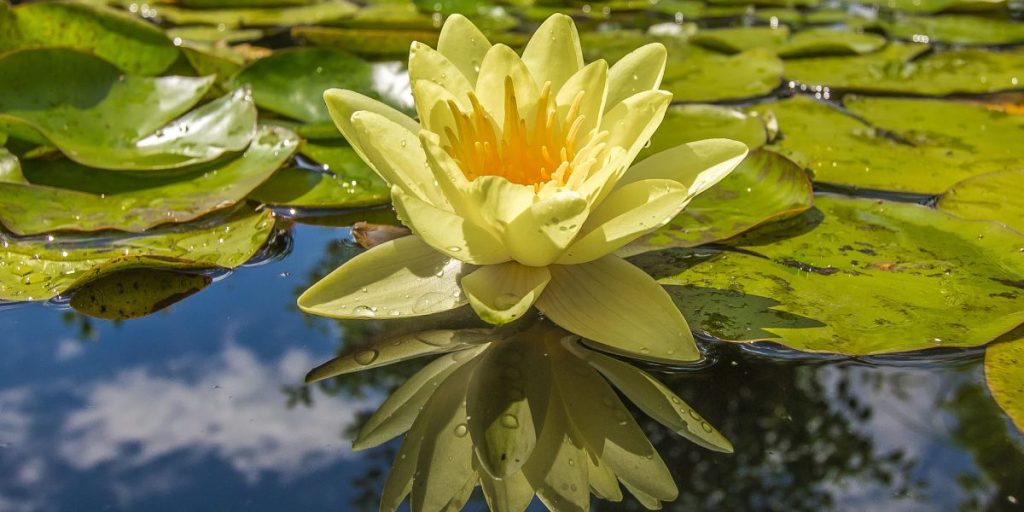
Pond plants are aquatic plants that grow in or near ponds and other bodies of water. They serve a number of important functions in a water garden, including providing habitat for wildlife, improving water quality, and enhancing the overall aesthetic of the pond.
Types of Pond Plants
Some common types of pond plants include water lilies, lotus, cattails, rushes, and water irises. These plants typically have long, thin roots that anchor them in the substrate at the bottom of the pond, and leaves or stems that float on or emerge from the surface of the water.
Water Lilies
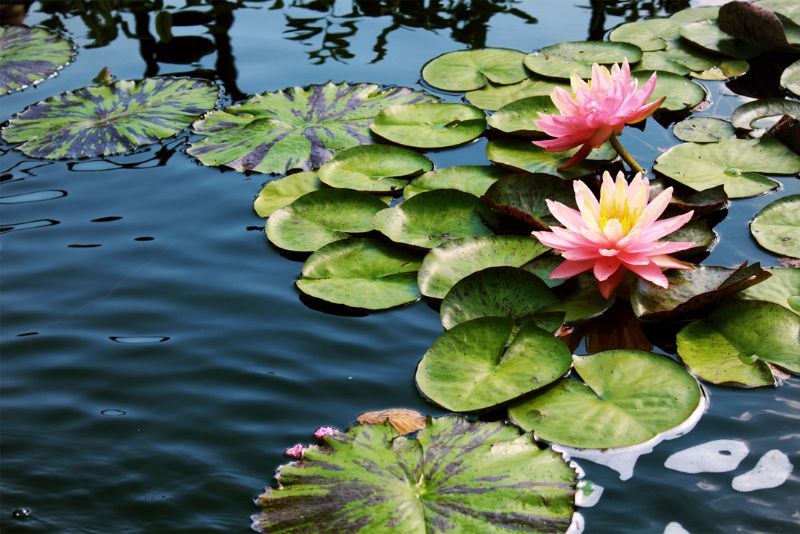
Water lilies are a popular choice for pond gardens due to their large, showy flowers and wide, green leaves. They come in a range of colors, including white, pink, yellow, and red, and can provide a stunning visual display in the pond. Water lilies also help to shade the water, which can help to reduce algae growth and keep the pond cooler in the summer.
Lotus Plants
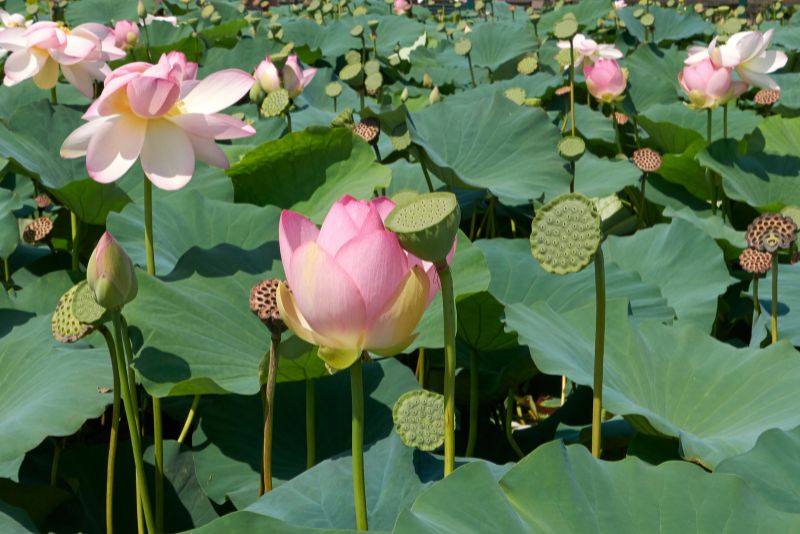
Lotus plants are another popular choice for pond gardens. They are known for their large, round leaves and stunning flowers, which come in a range of colors including white, pink, and red. Lotus plants have a unique root system that allows them to grow in deep water, making them a good choice for ponds with deeper areas.
Cattails
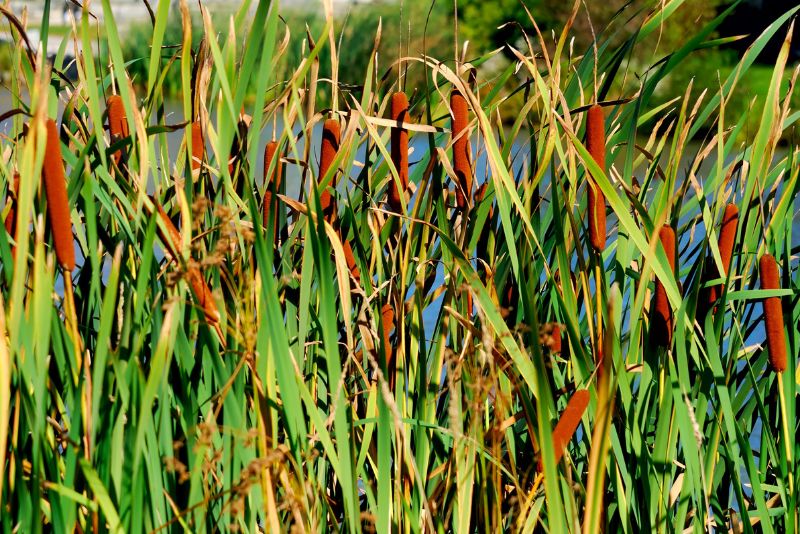
Cattails are another common pond plant that is known for its tall, reed-like leaves and brown, sausage-shaped flowers. These plants are native to North America and are often found growing along the edges of ponds and other bodies of water. Cattails are important food sources for a variety of birds and other wildlife, and their roots can help to filter impurities from the water.
Rushes and Water Irises
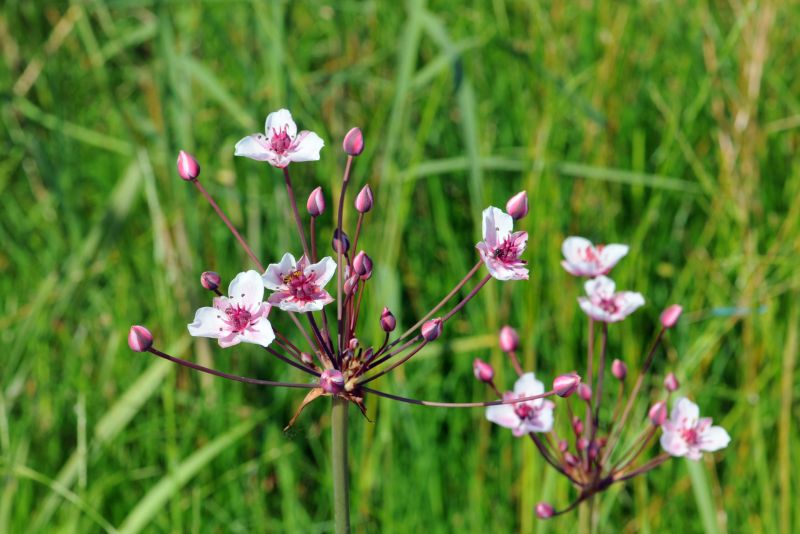
Rushes and water irises are other popular choices for pond gardens. Rushes are tall, slender plants with thin, grass-like leaves, and are often found growing along the edges of ponds and streams. Water irises are known for their large, brightly colored flowers and sword-shaped leaves, and come in a range of colors including blue, purple, and yellow.
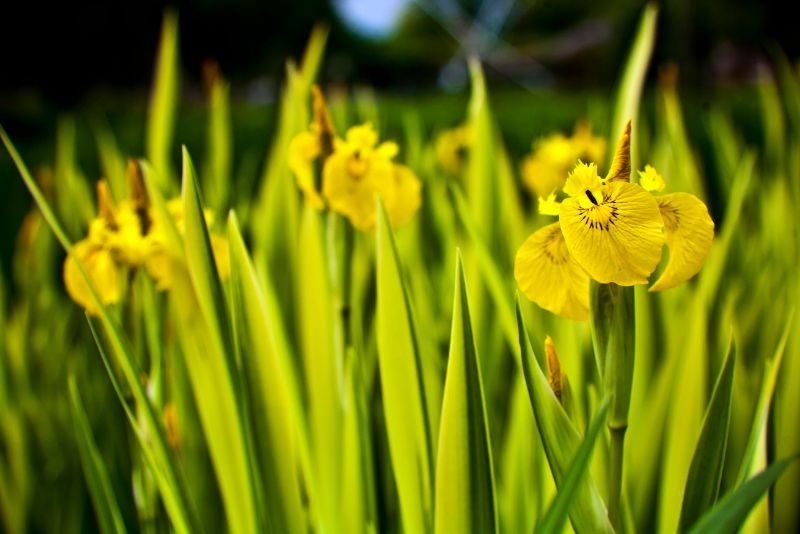
Why Add Pond Plants to Your Water Garden
In addition to providing habitat for wildlife and improving water quality, pond plants can also help to create a sense of peace and relaxation in a water garden. They also aid in keeping your outdoor area cool, so you won’t need to spend all day inside after your Brisbane air con installation. The sight and sound of water can be soothing and calming, and the presence of plants can add to this feeling of tranquility. For these reasons, pond plants are a valuable addition to any water garden.
Our Latest Articles
- Native Australian Pond Plants (My Favourites!)
I had a recent holiday in Australia and, of course, being the pond plant addict that I am, I couldn’t help but do a bit of local ‘research’ while I was there! While I was catching up with my good friend Paul, who runs a Brisbane pressure washing company, it turns out he’s equally obsessed with pond plants! Paul showed me around the beautiful water gardens at his house in Brisbane’s inner southside at Woolloongabba. I hope I spelt that right – it’s quite a mouthful – as are so many suburbs in the capital of Australia’s sunshine state, Queensland! It was great to have a local Brisbanite guide to show me the amazing variety of aquatic plants they have down-under.
7 Of My Favourite Australian Pond Plants
Nardoo (Marsilea Drummondii)
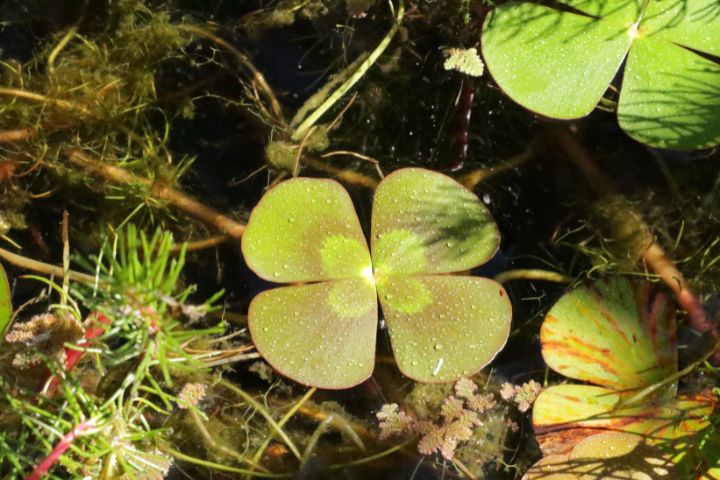
Nardoo, or Marsilea Drummondii, is uniquely Australian with a historical twist and my personal favourite. It has intriguing clover-like leaves that respond to light changes, floating on the water surface in ponds up to about 12 inches deep. This plant isn’t just for show; it’s edible and was a survival food for the famous explorers Burke and Wills. Besides, it provides shelter and nourishment for aquatic wildlife.
White Water Fringe (Nymphoides Indica)

The White Water Fringe or Snowflake (scientific name ) is native to many tropical areas and grows particularly well in Queensland. Note that it has been called a weed in parts of Florida! Snowflake has round waterlily like leaves that float on the water surface. The small, fringed flowers are white and resemble a snowflake – well maybe if you grow up in a tropical area and have never seen snow! It’s a full aquatic plant with a recommended depth of around 12 inches.
Brahmi (Bacopa Monnieri)
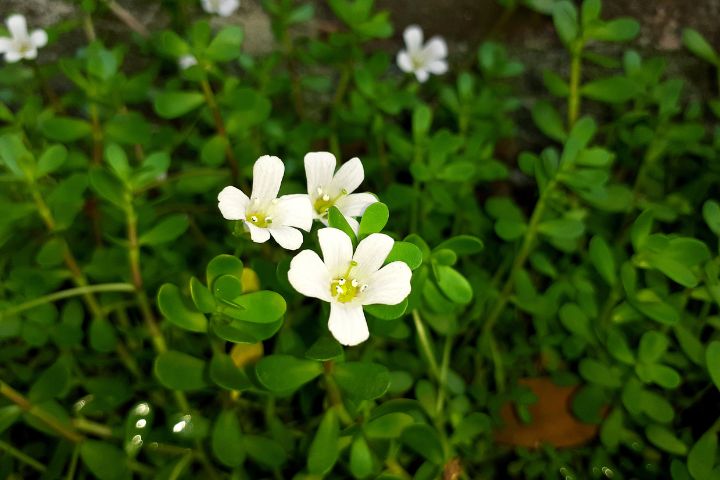
Brahmi, or Bacopa Monnieri, isn’t just a pretty face; it’s a multifunctional Australian native. Known for its memory-boosting properties in traditional Aboriginal medicine, this plant sports petite white flowers and succulent leaves that elegantly float on water. It’s a resilient grower, adaptable to various water depths up to about 8 inches. Besides adding beauty, Brahmi plays a crucial role in purifying pond water and acts as an oxygenator when submerged.
Shield Pennywort (Hydrocotyle verticillata)
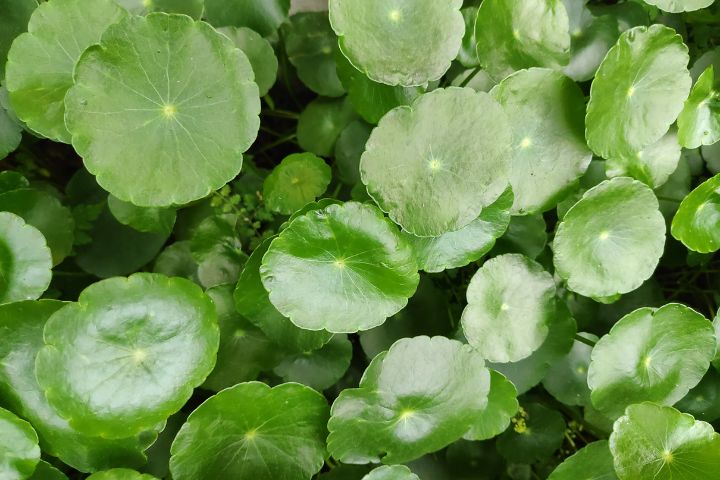
The Shield Pennywort, known scientifically as Hydrocotyle verticillata, is an Australian gem ideal for pond settings. Imagine small, round leaves sprouting in umbrella-like clusters, creating a lush, vibrant tapestry over your pond. When it blooms, it showcases tiny white flowers. Not only is it visually appealing, but it also serves as a natural shade provider and a haven for fish and other aquatic life. You can easily grow it in shallow waters, up to about 4 inches deep.
Running Marsh Flower (Villarsia reniformis)
Villarsia reniformis, commonly known as the Running Marsh Flower, brings a touch of Australian summer to your pond with its glossy leaves and vibrant yellow flowers. It’s a hardy plant, thriving in water depths of about 2 inches. I found that its real charm lies in attracting pollinators like bees and butterflies, making it a valuable addition for supporting local ecosystems. I was surprised to find out from Paul that Australia has a wide variety of native bees. Indeed they are much smaller than European bees and they’re all stingless! Always surprising with his many talents, Paul even gave me some of the Australian native bee honey that he had harvested from his hives. Can’t say I was a big fan though.
Knobby Club Rush (Ficinia nodosa)
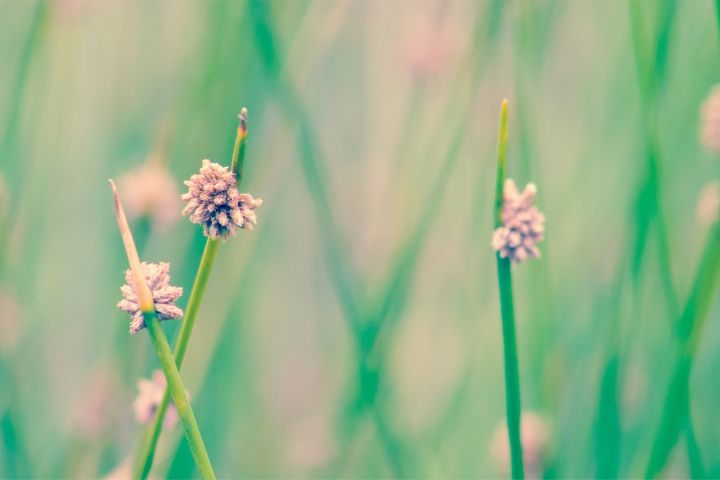
Ficinia nodosa, known as Knobby Club Rush, is a textural wonder from Australia. Its long, slender leaves form intriguing clumps, perfect for adding a distinct look to your pond. This plant is not just beautiful though. It’s a natural habitat for frogs and acts as a biological filter, especially after rain. While I was visiting Paul, a famous spring-time Brisbane thunderstorm hit around dusk. After it passed, I found the sound of frogs chirping away was simply wonderful. Best grown in shallow waters, Nobby Club Rush is a resilient and low-maintenance choice, suitable for all levels of pond enthusiasts.
Azolla
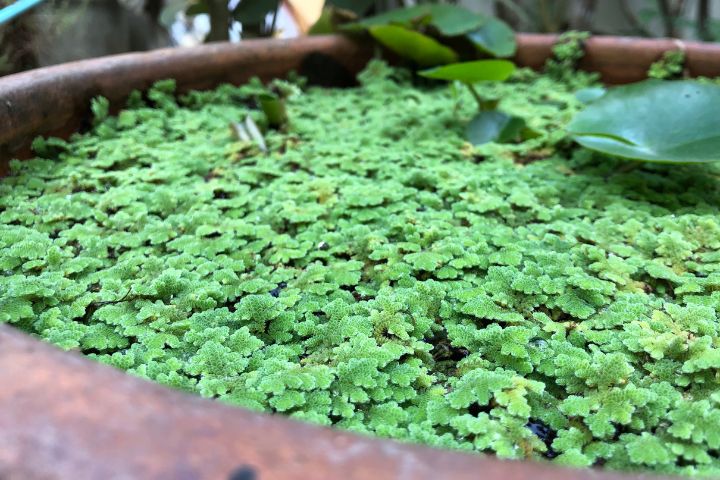
Have you heard about Azolla? This one could be a bit contentious – but I like it!
Azolla is also known as mosquito fern, duckweed fern, fairy moss, or water fern. This little plant is part of a group of seven aquatic fern species in the Salviniaceae family. What’s fascinating about Azolla is how different it looks compared to your usual ferns. It’s more like duckweed or some kinds of mosses in appearance. Out of all the fern species out there, Azolla filiculoides is one of just two that scientists have fully sequenced – pretty cool, right?
Now, here’s a fun fact: it’s believed that Azolla played a huge part in shaping our planet’s climate. Back in the Eocene era, it grew so much that it absorbed a ton of carbon, leading to a global cooling event that affects us even today.
But there’s a catch. When Azolla is introduced to new environments, like wetlands or freshwater lakes, it can become a bit of a troublemaker. It’s known to be invasive in some places, changing the aquatic ecosystems and affecting biodiversity. It’s amazing how such a tiny plant can make such a big impact, isn’t it?
- Types of Pond Plants (And How To Choose!)
Well, hello there, budding aqua-gardeners! Picture this: it’s a sunny morning, you’re sipping on your coffee, while you admire your Canberra roof cleaning efforts and your eyes land on that pond in your backyard. It’s nice, but it’s lacking a certain…je ne sais quoi. You’ve been flirting with the idea of pond plants for a while now, but are feeling a bit like a fish out of water. I get it, diving headfirst into a new hobby can be daunting. But hey, that’s why you have me, your friendly neighborhood pond plant enthusiast, here to guide you.
My name is Edgar, and for the past 16 years, I’ve been nurturing my love for all things green and aquatic. From the marshy marvels of bog plants to the drifting dandies of floating plants, I’ve seen it all, grown it all, and now, I want to share all that juicy knowledge with you.
So, whether you’re looking to jazz up that pond with some vibrant water lilies or wage war against that pesky green algae, I’ve got your back. Together, we’re going to transform your pond from ‘blah’ to ‘beautiful’, and have a whale of a time doing it.
Ready to take the plunge? Let’s do this!
The Transformational Power of Pond Plants: More Than Just a Pretty Face
Ever looked at a pond and thought it could use a bit of sprucing up? Or maybe you’ve been battling that pesky green algae that seems to have made your pond its personal playground? Well, my friend, it sounds like you could use some pond plants in your life.
Now, I know what you’re thinking, “Edgar, I can barely keep my houseplants alive, and now you want me to dive into the world of pond plants?” Don’t worry, I’ve got your back! I’ve been experimenting with pond plants for over 16 years now, and I promise you, it’s not as daunting as one might think.
The Aesthetic Appeal: From Plain Pond to Vibrant Water Garden
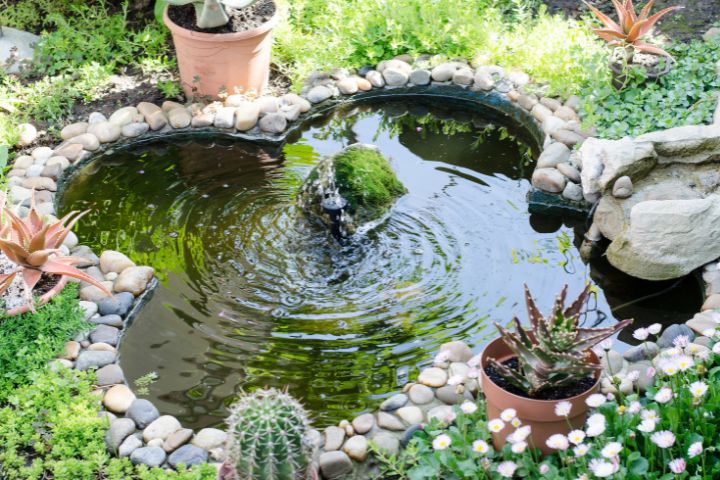
Imagine this: a serene pond in your backyard, filled with lily pads, lotus flowers, and rushes gently swaying in the wind. Sounds like something straight out of a Monet painting, right? Well, this could be your reality with the right mix of pond plants.
Pond plants add a visual interest to your pond that’s hard to beat. They bring in a diverse range of shapes, colors, and textures that can transform a simple pond into a stunning water garden. But beyond just looking good, these plants are actually working hard behind the scenes to keep your pond healthy.
The Functional Benefits: Your Secret Weapon Against Algae and More
Ever wondered why ponds without plants often turn green? That’s the work of algae, folks! Algae thrive on the nutrients in the water, and without any competition, they can quickly take over your pond.
Enter pond plants. These nutrient munchers consume the same food that algae do, effectively starving them out. It’s a bit like inviting your friends over for dinner and then eating all the pizza before they can get a slice!
Besides this, pond plants also provide shade, which is key in preventing algae growth. An overly sunlit pond is like an all-you-can-eat buffet for algae, but those broad lily pads can help keep the sun’s rays in check.
In conclusion, pond plants are both the beauty and the brains of your pond. They not only transform the look of your pond but also help maintain a healthy ecosystem. So, why not give these hardworking plants a chance and see the magic happen in your own backyard?
Got questions? Or maybe you want to share your own experiences with pond plants? Feel free to drop a comment below. I’d love to hear from you and continue this conversation about our green, aquatic friends!
Understanding Pond Plant Zones: A Splashy Guide to Aquatic Greenery
Ever tried to plant a sunflower underwater, hoping it’d transform into a fancy aquatic version of itself? Yeah, me neither. That’s because plants, like us, have their own comfort zones, and this is particularly true for our leafy friends of the pond. So, let’s dive in and explore these zones, shall we?
Zone 1: Bog Plants – The Marshy Marvels
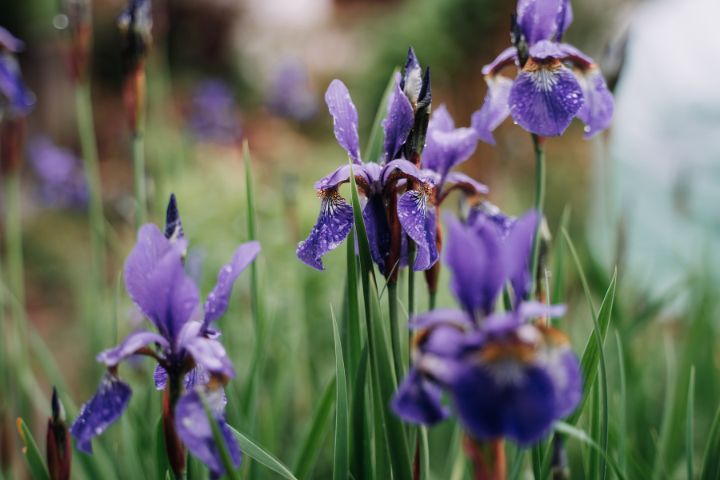
If there was a Tinder for plants (Plant-der?), Bog plants would list their preferred hangout as ‘the shallow waters.’ They love having their feet wet, but not too wet. You’ll typically find these guys in the muddy edges of your pond. Their roots are submerged, but their leaves and flowers stay high and dry.
For a dash of color and drama, you might consider adding the elegant ‘Blue Flag Iris’, a real showstopper from the folks over at Envii. Or if you prefer something a bit more low-key, ‘Marsh Marigold’ could be your next best plant buddy.
Zone 2: Marginal Plants – The Borderline Beauties
Next up, we have the Marginal Plants. These guys like to live life on the edge, quite literally. They grow along the margins of your pond, where the water is a tad deeper. They’re like the Bog plants’ adventurous cousins.
Splash Supply Company offers some fantastic examples, like the ‘Pickerel Rush’ with its striking blue flowers, or the ‘Sweet Flag’ that adds a touch of softness with its gently waving leaves.
Zone 3: Deep Marginal Plants – The Deeper, The Better
If the Marginal Plants are the adventurers, the Deep Marginal Plants are the daredevils. They prefer even deeper water, and aren’t afraid of getting their leaves wet.
The ‘Water Lily’, for instance, is a classic choice from Envii. It’s the quintessential pond plant that’s not just pretty to look at but also provides great cover for fish and other pond critters.
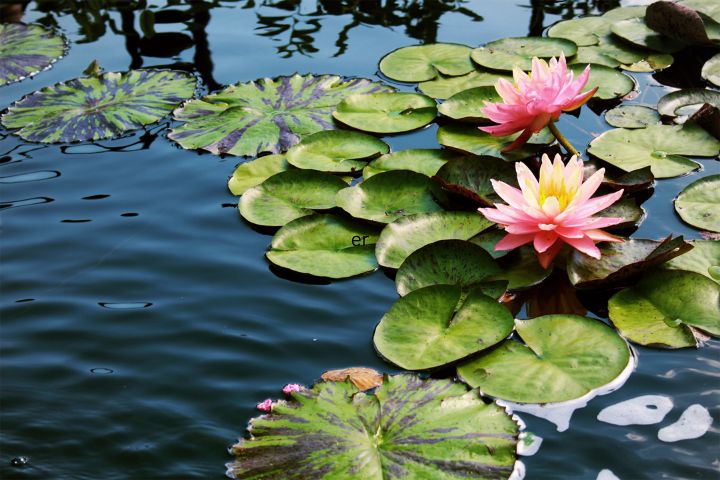
Zone 4: Deep Water & Oxygenating Plants – The Life Suppliers
Now, we’re getting into deep waters, literally. These plants are not just about looking good; they’re the workhorses of your pond. They help oxygenate the water, making it a better place for fish and other aquatic life.
The ‘Hornwort’ and ‘Water Hyacinth’ are some good examples you can find at both Envii and Splash Supply Company.
Zone 5: Floating Plants – The Drifting Dandies
And finally, we come to the Floating Plants. These free spirits prefer to drift lazily on the water’s surface, soaking up the sun. But they’re not just about the easy life. They offer shade to the water below, helping to control algae growth.
Take the ‘Water Lettuce’ from Envii, for example. It’s a great choice if you’re looking to add some greenery without any planting fuss.
There you have it! A quick tour of the different zones of pond plants. Remember, each plant has its own preferred zone, so it’s important to match the right plant to the right place. So, what zone are you ready to dive into? Let’s chat in the comments!
Dive Right In: Choosing and Planting Your Pond Plants
Ever looked at a pond and thought, “I could totally do that?” Well, grab your rubber boots and garden gloves because we’re diving headfirst into the wonderful world of pond plants.
Pond Homework: Research Before Planting
Before you head off to the local nursery or start clicking away online, take a moment to consider your pond’s size and location. The size of your pond isn’t just determined by the size of your yard. It’s also about the depth, the amount of sunlight it gets, and how many pesky critters might take up residence.
And remember, when it comes to wildlife ponds, less is more. Overplanting can create a messy tangle that’s not only a pain to maintain but can also hinder your pond’s wildlife from flourishing. So, keep it simple and let nature do the rest.
Timing is Everything: Best Time to Plant
Like any good gardener knows, timing is everything. Planting at the right season can make a big difference in the health and growth of your pond plants.
Spring and early summer are generally the best times to plant. The weather is warming up, and the plants will have plenty of time to establish themselves before winter rolls around. Plus, who doesn’t love a good spring planting session? It’s like a garden party, but with way more mud.
Roll Up Your Sleeves: Maintenance and Care
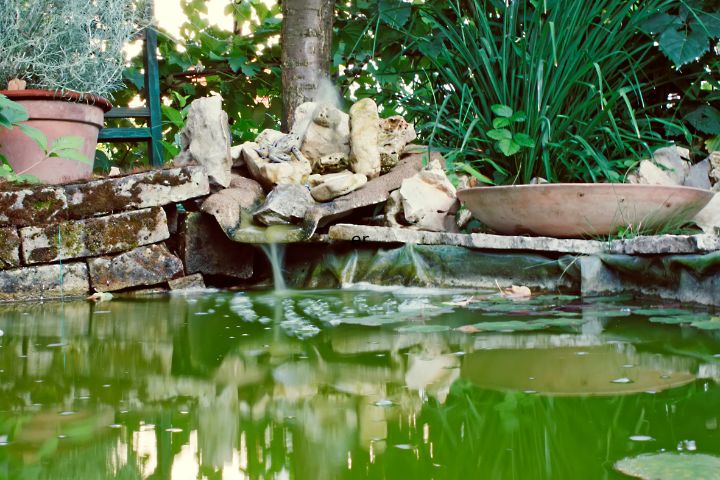
Once your plants are happily settled in their new aquatic home, it’s time to roll up your sleeves and get to work. Keeping your pond tidy is essential for maintaining a healthy ecosystem.
This means regularly trimming excess foliage, which can be a meditative process, like aquatic bonsai. Trimming helps control growth, encourages more blooms, and prevents dead leaves from decomposing in the water. Trust me, nothing ruins the serenity of a pond quicker than a murky, leaf-choked water feature.
And there you have it! Those are my tips for choosing and planting pond plants. Remember, every pond is as unique as the gardener who tends it. So, don’t be afraid to experiment, make mistakes, and most importantly, have fun with it.
Now, it’s over to you! Have any questions about pond plants, or want to share your own pond experiences? Leave a comment below. We’re all here to learn and grow together.
Tropical vs. Hardy Plants: The Great Garden Showdown
Let’s dive right into the nitty-gritty of pond plants. Imagine you’re at a boxing match, but instead of burly athletes, it’s plants going head to head. In one corner, we have the exuberant and exotic tropical plants, and in the other, the tough, tenacious hardy plants. Who comes out on top? Let’s find out!
Understanding the Difference
Firstly, let’s get to know our contenders a little better. The term “tropical plants” refers to flora that hails from, well, the tropics. These are areas near the equator that enjoy warm climates year-round. Some of the best examples you might find at our favorite plant supplier, Splash Supply Company, include the stunning water lily and the dramatic lotus.
On the other hand, “hardy plants” are the survivalists of the plant world. They’re equipped to withstand different climates, including frosty winters. Examples include the resilient water hawthorn and the vibrant cardinal flower.
Okay, we’ve met our contenders. Now let’s look at what they bring to the ring, or rather, your pond.
Benefits of Each Type
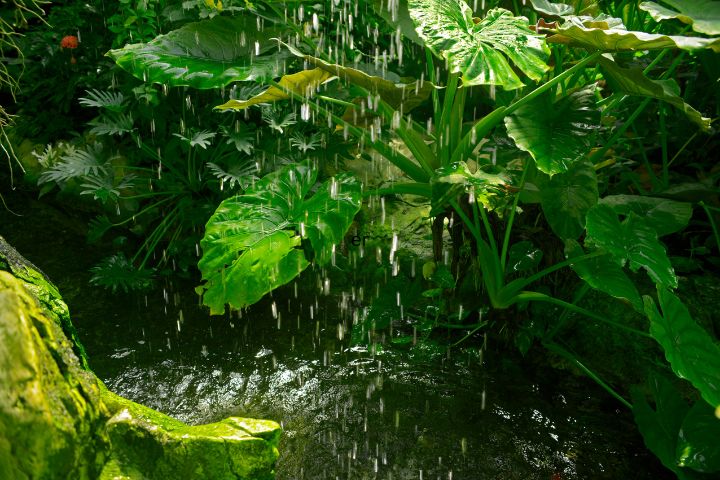
Ding ding! Round one: aesthetic appeal. The tropical plants with their lush leaves and vivid blooms are the showstoppers of the plant world. They have a unique ability to transform your garden into a mini vacation spot. Picture a serene lotus floating on the water’s surface, or the flamboyant water lily with its petals spread out like a fan. It’s like having a slice of Bali or Tahiti right in your backyard!
But the hardy plants aren’t fighters to be underestimated. They’re the garden’s workhorses, putting up a show across seasons. In the frosty winters when everything else goes dormant, hardy plants like the water hawthorn continue to bloom, providing much-needed color. And let’s not forget, these plants are resilient. They can survive in a variety of climates and conditions, which means less work for you.
So, who wins this plant showdown? Well, that’s really up to you, my green-thumbed friend. Each type has its own appeal and benefits. Maybe you’re drawn to the exotic allure of the tropicals, or perhaps the dependability of the hardies resonates more with you.
Remember, there’s no right or wrong choice here. It’s about choosing plants that make you happy and suit your garden’s conditions. And hey, who said you can’t have both? Diversity is the spice of life, after all! So go ahead, mix and match, and create a pond that’s uniquely yours.
Wrapping Up
And there you have it, folks! We’ve dived deep into the world of pond plants, surfacing with a treasure trove of knowledge. Now, you’re all set to embark on your own aquatic gardening adventure. Remember, this journey is all about experimentation and fun. Don’t be afraid to get your hands dirty, make a few mistakes, and most importantly, learn along the way.
Whether you’re all about those tropical showstoppers, or you’re leaning towards the hardy survivors, there’s a perfect pond plant out there just waiting to find a home in your backyard. So, why wait? Dive right in, and before you know it, you’ll be sipping your morning coffee next to a vibrant water garden.
Are you ready to transform your pond? Have any questions or experiences you’d like to share? Let’s keep this conversation flowing! Drop a comment below and let’s create a thriving community of pond plant enthusiasts.
